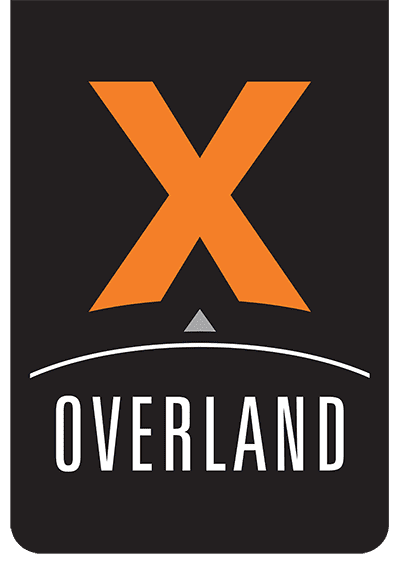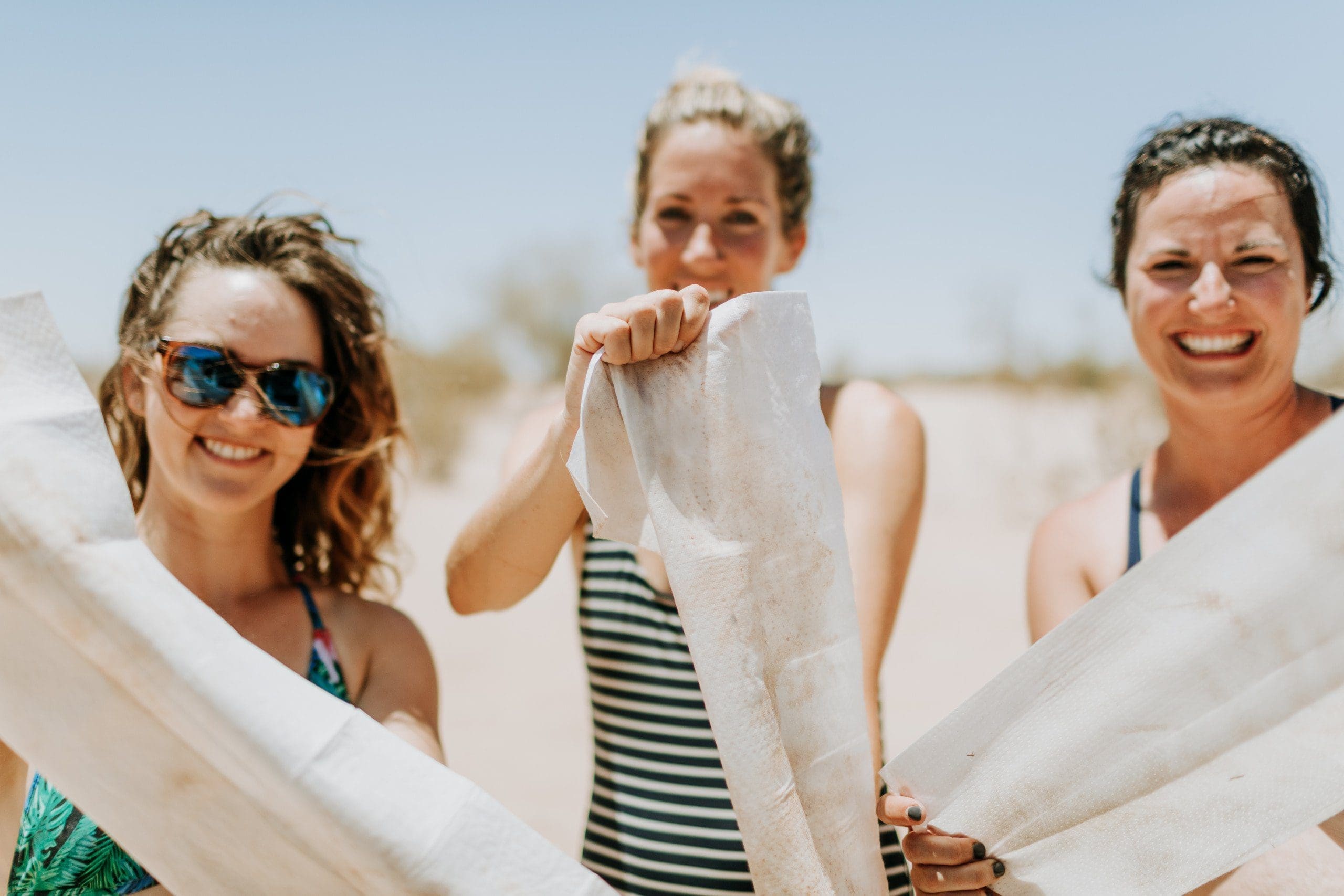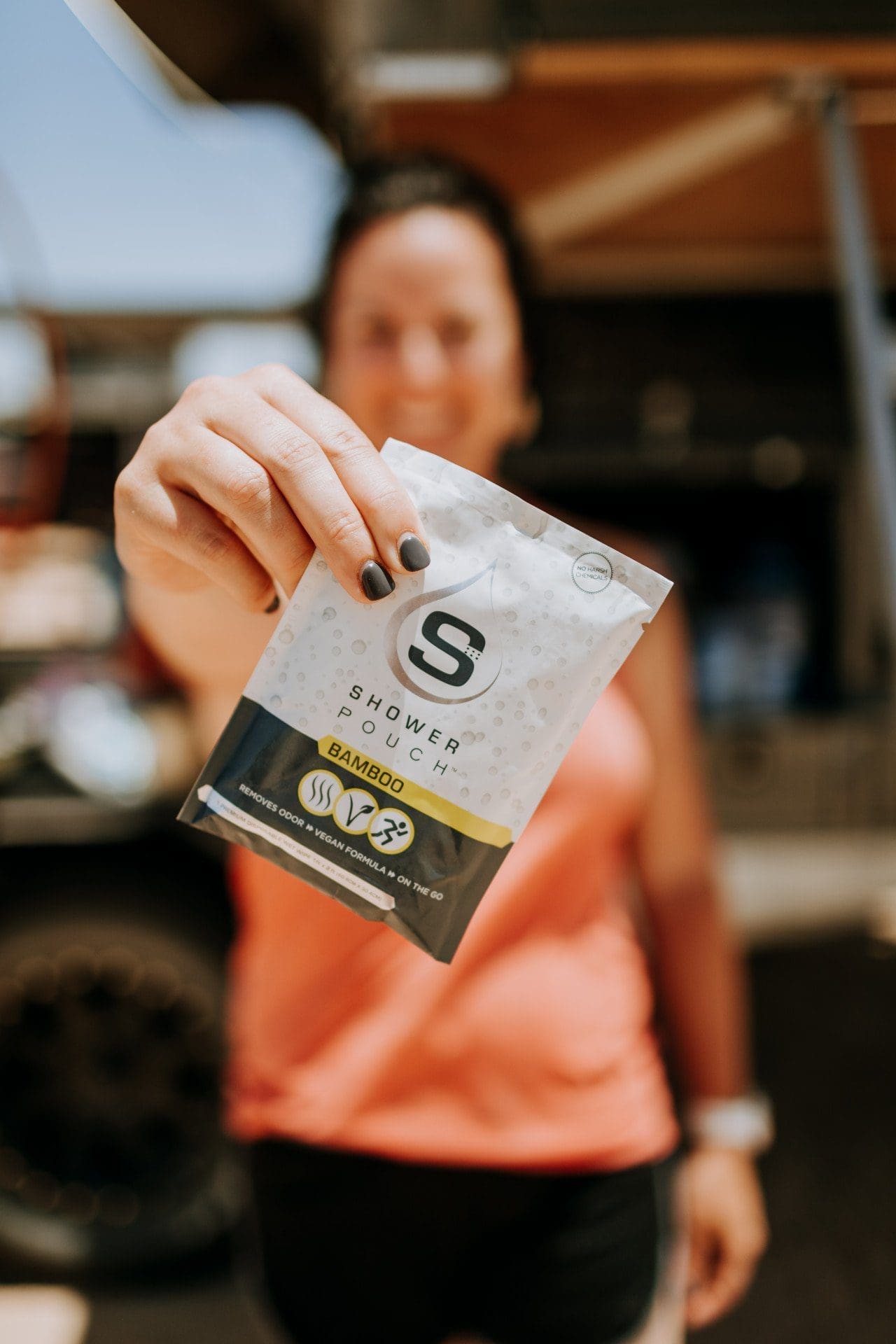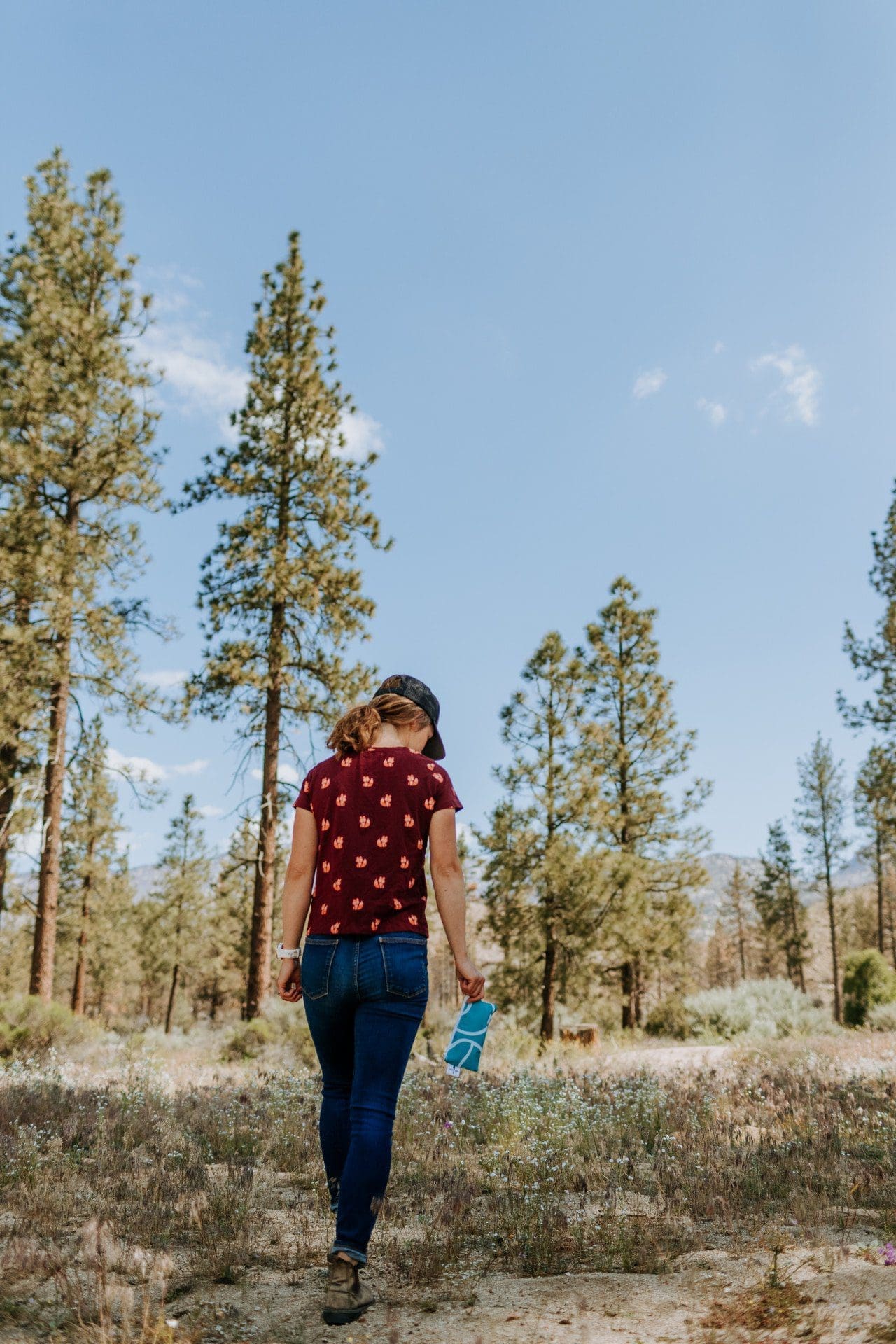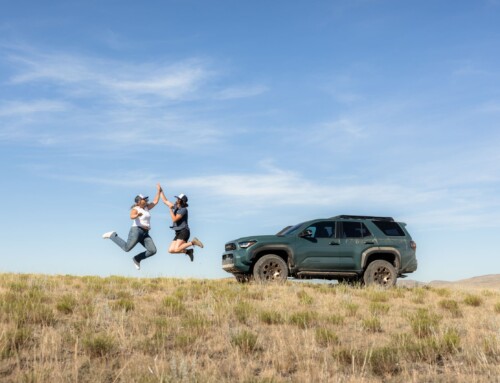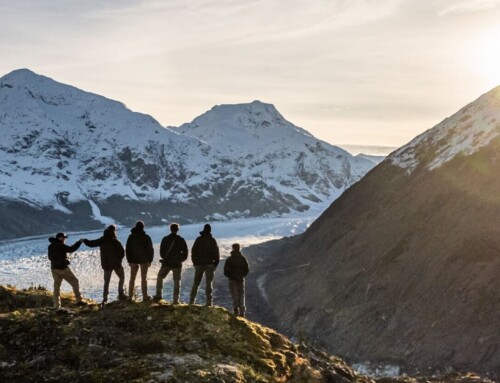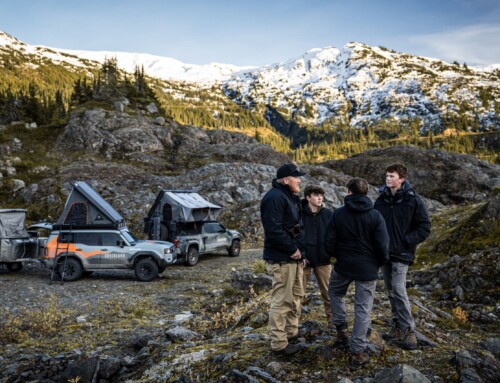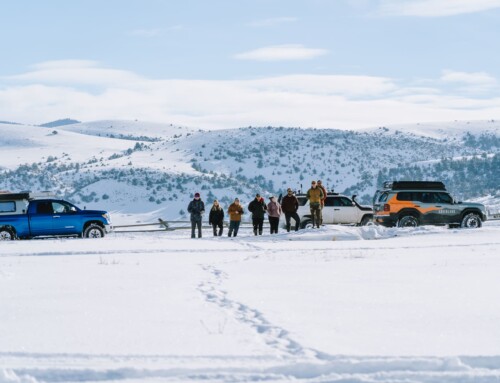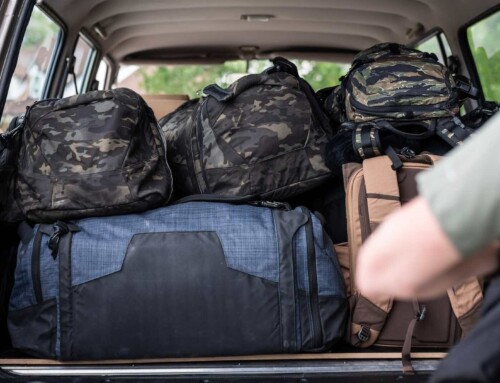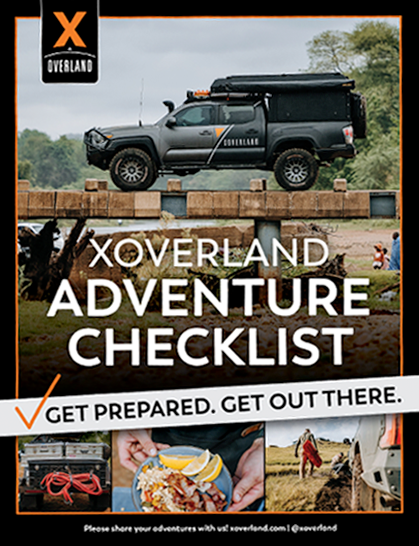Aside from inquiries about our vehicle builds, the most common question people ask us is: “How do you deal with hygiene while overlanding?” This is a fair question! The reality is that in North America most of us have access to indoor plumbing or outhouses and don’t need to second guess where we’re going to do our business until we’re out in the wilderness.
Fortunately there are many ways to maintain hygiene while on the road. Here are our top tips for feeling fresh while overlanding.
Take Advantage of that Shower or Flush Toilet—Whether You Think You Need it or Not
At Expedition Overland, we’ve learned to live by what we call “The Jack Reacher Method.” Jack Reacher is an ex-military cop and permanent wanderer who is constantly on the run. He also happens to be a fictional character in author Lee Child’s series of crime thrillers. Reacher takes advantage of every shower, toilet or opportunity to sleep, whether he needs it or not. This is the motto we live by: use that shower or bathroom—whether you need to or not. You never know when the next one will appear, especially in other countries.
Showering
Low-Cost Showers
Campsites, truck stops, some gas stations, gyms and community centres can present an opportunity for a decent shower. For international travelers, there are many overlander camps located along the Pan American Highway, spanning from Alaska to Argentina. South of the United States, these overlander camps often offer hot showers, wifi and electricity and are usually a great low-cost option. They are also the perfect place to swap travel tales with other travelers. A word of advice: whether you are showering at a gym in San Diego or in an overlander camp in Guatemala, bring a pair of sandals to prevent plantar warts or picking up a pesky foot fungus.
Find your next overlander camp on the iOverlander app >>
The Sponge Bath
There are a variety of ways to carry out the sponge bath, including filling a bucket, water bottle, Jetboil (warm water on a cold night equals perfection!) or sink. Use biodegradable soap and a face cloth or handkerchief to wash your bits. A bonus: most biodegradable soap can also be used for laundry. Our favorite is the Sea to Summit Wilderness Wash.
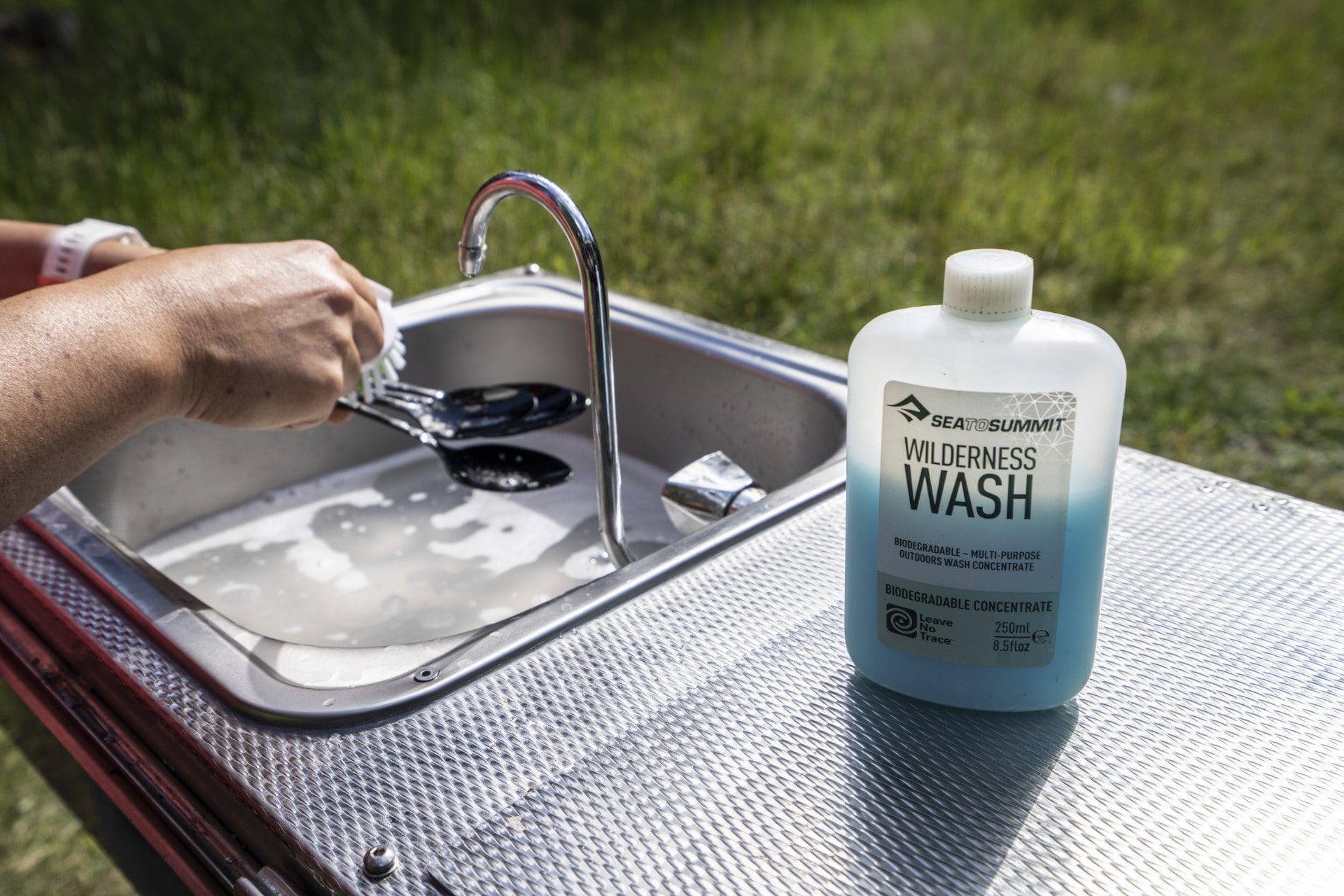
Even when biodegradable, soap can affect the water quality of lakes and streams, so minimize its use as much as possible. Always follow Leave No Trace Principles by washing at least 200 feet from shorelines and rinse with water carried in a pot or jug. Where fresh water is scarce, think twice before swimming in creeks or potholes.
The Wipes ‘Bath’
Wet wipes are definitely our go-to hygiene solution after a long day of driving and filming, and are a great way to feel refreshed and clean when a shower isn’t on the agenda. We love the Shower Pouch full body wet wipes as they are a whopping two feet by one foot of 91% organic goodness, plus the cloth is rugged enough to pop into the washing machine for re-use. We often split the wipe in half and use one for our delicate parts and the other for the rest of our body.
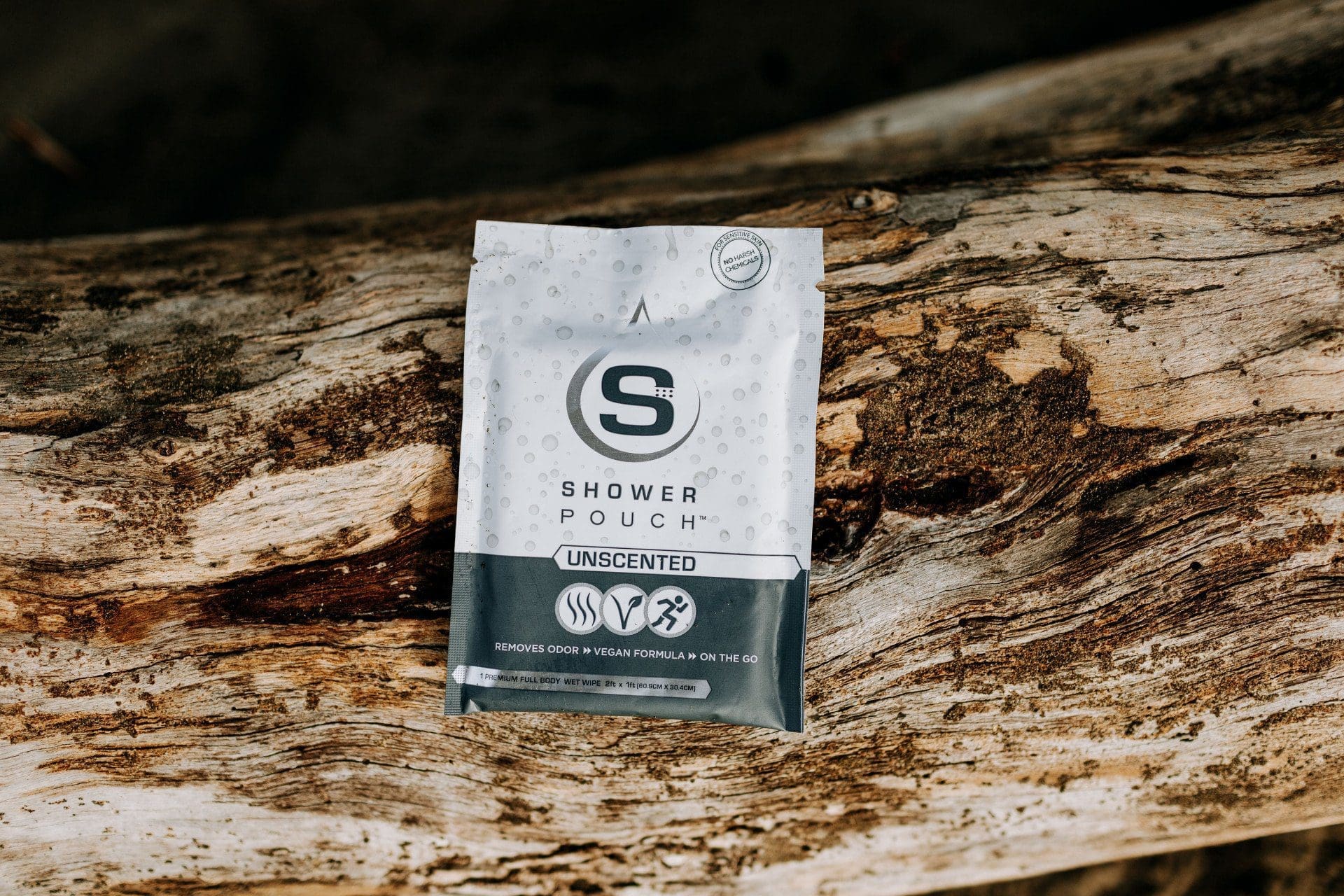
The Outdoor Shower
Each of our Patriot Campers is equipped with a diesel hot water heater, freshwater tank with a shower hose and head attachment. In order to conserve water we use this feature rarely, but it is absolute luxury when we do.
During our Alaska/Yukon expedition we used the NEMO Helio Pressure Shower for dishes and showering, while team members Richard and Ashley also found the NEMO Helio Pressure Shower to be quite effective during their Pan-American travels.
For those with long hair, dry shampoo, a hat, and/or braids can go a long way to extending the time between washes.
Rachelle’s Tip: “This is where the Shower Pouch is nice for the rest of the body. I wait to wash my hair about once a week when we don’t have a lot of water or time.”
>> Check out Episode 6 of Oh Hey There! With Jeff: How To Stay Clean On The Road
Bathroom Breaks
On The Road
Gas stations, grocery stores and community centres all provide potential bathroom opportunities. Many states also have outhouses or flush toilets along popular or remote routes. Nothing differs for international travelers. Just like us, locals living in foreign countries require fuel, food and rest stops, and international overlanders would be hard-pressed in most urbanized locations not to come across a bathroom along the way. A word of advice: bring your own hand sanitizer and toilet paper. Rest stops down south don’t necessarily keep soap or TP stocked up and many may charge a small fee to use their facilities.
Into The Wild
Unless you have a cassette or portable toilet integrated into your camper or overland build, there are two main ways to do your business in the outdoors: the pee bottle and the cathole.
In instances where there is limited privacy, or you’re just half asleep in your rooftop tent and can’t be bothered to climb down the ladder in the middle of the night, the pee bottle can come in quite handy. It is wise to practice first, choose a large enough bottle (a 1L Nalgene will often do the trick), and-this is important-label the bottle so you don’t mix it up with your water bottle. For the women out there, keep reading! We have great tips for you below!
When it comes to number twos, catholes are the most widely accepted method of waste disposal. Keep in mind that solid waste must be packed out from some areas, such as narrow river canyons.
It is important to adhere to the Leave No Trace Centre for Outdoor Ethics’ principles when it comes to digging a cathole-this avoids pollution of water sources, an unlucky find by another camper, and the minimization of disease spread. Here is the recommended protocol by Leave No Trace:
How to Dig a Cathole
- Select a cathole site at least 200 feet (approximately 70 adult paces) from water sources.
- Dig a hole 6-8 inches deep (about the length of a trowel blade) and 4-6 inches in diameter. In a hot desert, human waste does not biodegrade easily because there is little organic soil to help break it down. In the desert, the cathole should only be 4-6 inches deep. This will allow the heat and sun to hasten the decay process.
- When finished, the cathole should be filled with the original dirt and disguised with organic materials.
A word on toilet paper: it should either be placed in a bag and packed out or be thoroughly buried in a cathole. Use sparingly, and only plain white non-perfumed brands. Never throw toilet paper on the ground without digging a cathole first. Best practice is to carry it out. If there’s one way to ruin that scenery or experience, it’s finding used, strewn toilette paper all over the trail and bushes.
For easy access, we store wipes, shovels, hand sanitizer, toilet paper and plastic bags in the door pouches of each Expedition Overland rig and in a ‘quick grab’ bag.
>>Check out Episode 29 of ‘Oh Hey There!’ With Jeff: Pooping in the Woods
For The Ladies
Going to the bathroom outdoors can feel more complicated for women, especially for those new to it. The Expedition Overland ladies have a lot of experience when it comes to doing their business in the wilderness, and are happy to offer up advice. If you feel more comfortable sending an email with your questions, don’t hesitate to reach out to info@xoverland.com with the subject line: ‘Women Hygiene Question.’
One essential piece of gear that the X Overland women swear by is the female pee device. Our favorite is the Tinkle Belle. It comes with a cute zippered case and has made a world of difference during our travels. This device offers you the option of standing or kneeling to do your business. It also provides a convenient way to stay in the rooftop tent and use a pee bottle.
Quick Tip: Practice with your female urination device in the shower before your next trip and you will be a pro when the time comes to use it!
Lack of privacy is a common concern expressed by women who feel uncomfortable going to the bathroom without facilities. Our suggestions include bringing a lady friend with you, sourcing out heavily-treed areas, or having your partner stand nearby. We also use two vehicle doors as a shield while having a quick pee on the side of the road. Avoid the deep squat if the vehicle is lifted though!
Finally, when it comes to managing your period while overlanding, REI has an excellent post titled ‘Backpacking With Your Period’ that offers a lot of advice that translates well to overlanding. Just remember, you need to pack out anything you bring in. Do not bury your feminine products. There are great alternatives such as reusable and single-use cups that make traveling and being outdoors much easier.
Laundry
Whether you’re at home, on the road, camping in the backcountry, or traveling through another country, laundry is one task that you cannot avoid. Those sweaty socks, muddy pants and dusty t-shirts aren’t going to wash themselves, no matter how long you procrastinate!
Of course, the laundromat is one convenient option but this can sometimes be time-consuming and expensive, and if you’re spending good quality time exploring backroads or camping on beaches, a little creativity can go a long way. And what if you have a large family with a pile of clothing items? Check out our blog post dedicated to this topic: How To Do Laundry While Overlanding. You can also check out Episode 3 of the Croft Solo Series for a quick ‘how to’ from Clay on how the Croft family does laundry on the road.
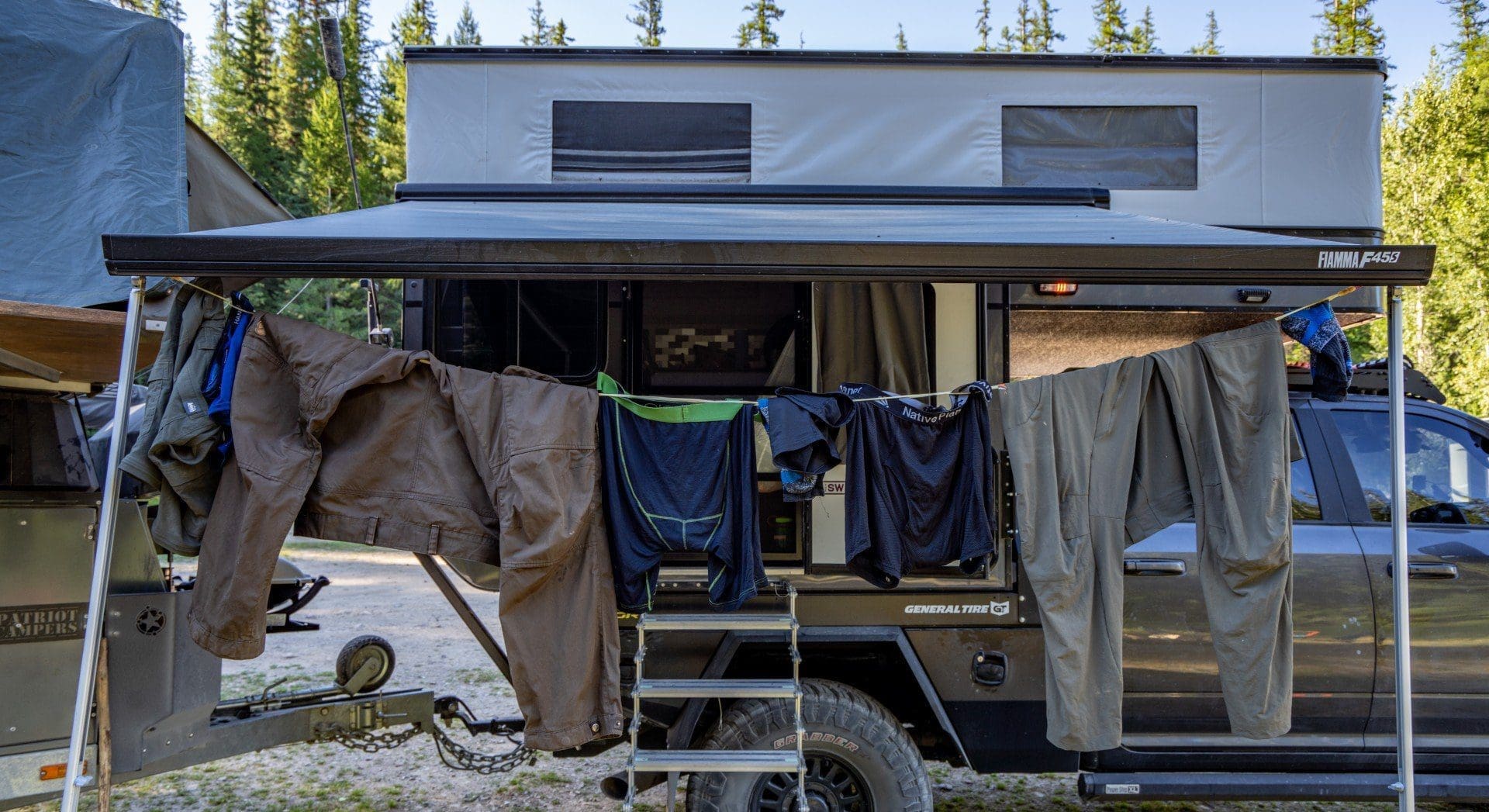
We hope this post has proved helpful and given some insight into the world of hygiene and overlanding. Be sure to shoot us a comment below with any tips and tricks you’ve come across over the years! As always, let us know if you have any questions!
